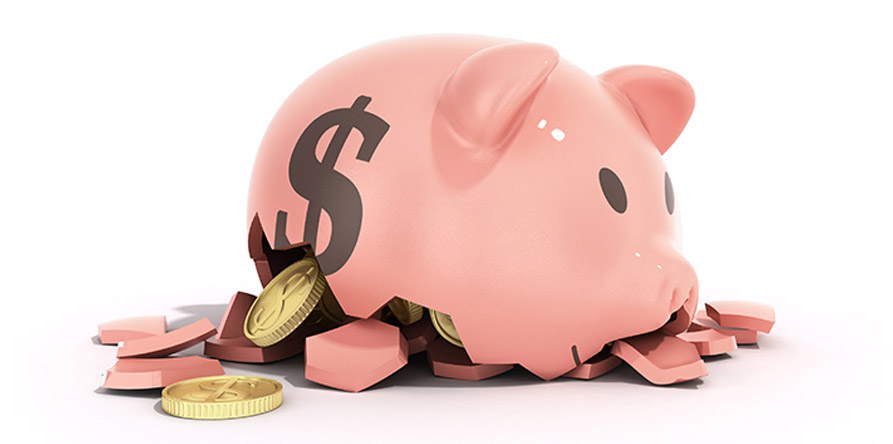Fidelity’s retirement calculator can help you look at the bigger picture when it comes to retirement planning and give you an idea of how much you need to retire comfortably.

What is the average retirement income in Canada?
It may sound clichéd, but there’s never a wrong time to think about retirement. Getting a sense of the average Canadian’s retirement income can help you determine if you’re on the right track or if you need to make changes to your financial plan.
According to Statistics Canada’s 2024 Canadian Income Survey, the average after-tax retirement income for senior families in 2022 was $74,200, or $6,183 per month. For individual seniors, it was $33,600, or $2,800 per month.1
Average after-tax retirement income for senior families
Annual |
Monthly |
|
Families |
$74,200 |
$6,183 |
Individuals |
$33,600 |
$2,800 |
How much do I need to retire in Canada?
While these figures are a great starting point, your retirement goals may be quite different. If you haven’t already, ask yourself if the above numbers would be enough to maintain your lifestyle during retirement.
One popular approach is to assume you’ll need 70% of your income during your working life to maintain your lifestyle in your post-working years.
It’s important to factor in the effects of inflation. If the prices of goods and services rise faster than what you’re earning, inflation could erode your purchasing power. That means you’ll have to save more today to maintain your current lifestyle in the future.
For example, take a 35-year-old who plans to retire at age 65 and is aiming for an after-tax retirement income of $3,000 per month. Assuming a long-term inflation rate of 3% over a 30-year period, they would need to plan for a future monthly income of $7,282 to have the same buying power in retirement as their salary provides today. Periods of particularly high inflation, like the one we’ve recently experienced, can be unpredictable, and may require you to save even more to meet your retirement goals.
Here’s a guide to how people in various stages of life should approach retirement savings.
What are sources for retirement income?
To gauge your income target, you need to get a sense of your income sources in retirement.
Government retirement income
The main government source is the Canada Pension Plan (CPP), which pays out based on your lifetime contributions.* For 2024, the maximum benefit for someone retiring at age 65 is $1,364.60 per month, although the average payout is actually much lower, at $831.92 per month.2
You can start taking CPP any time between ages 60 and 70; however, the timing will affect your payout. The earlier you decide to collect CPP, the smaller your benefits will be. For example, someone collecting CPP at 60 could see their monthly benefit reduced by as much as a third to account for the extra years they’re collecting payments. On the other hand, deferring your CPP until age 70 could see you net as much as 40% more per month than someone who collected CPP at age 60.
Another government source of retirement income is Old Age Security (OAS), which is based on how long you’ve lived in Canada and on your income. For 2024, the maximum monthly payment for 65- to 74-year-olds is $713.34, and once you turn 75, it increases by 10% to $784 a month.3 You can’t take OAS early, but you can increase your monthly amount by up to 36% if you delay taking it until age 70. In addition, if your income is below a predetermined threshold, the Guaranteed Income Supplement (GIS) can provide up to an additional $1,065.47 per month for individuals. If your annual net income is higher than $90,997, you’ll be subject to OAS clawbacks, or a reduction in your monthly amount, and if your income exceeds $142,609, you won’t receive OAS at all (these numbers are valid for 2024).4
While all of these benefits are indexed to inflation, they’re generally not enough to live on, so you’ll need other income sources as well.
Employer retirement income
For those fortunate enough to have one, an employer-sponsored pension plan is a great way to build retirement savings quickly. The gold standard is the defined benefit plan, which provides a lifetime pension based on your average salary and years of service. There’s also the defined contribution plan: you and your employer both contribute to the plan, but your ultimate benefit amount is based on how much you were able to save and grow your investments during your working years.
Personal retirement and other investment accounts
For most retirees, Registered Retirement Savings Plans (RRSPs) and Tax-Free Savings Accounts (TFSAs) are key components of any retirement plan, as they allow investments to grow without incurring capital gains tax. With RRSPs, your contributions are tax-deductible, but you’ll be taxed later when you withdraw the money in retirement. In addition, you must convert your RRSP to a Registered Retirement Income Fund when you turn 71. The TFSA is a great complement to an RRSP, because your withdrawals are tax-free. You may be able to lower your retirement tax burden – and potentially minimize any OAS clawbacks – by drawing down money in your TFSA before other sources. However, an advisor can help determine what accounts to tap into first.
Investments inside non-registered accounts provide another potential revenue stream, but you will have to pay capital gains taxes on the sale of any investments . You also have to pay tax on an annual basis on any dividends or income earned inside of the account.
Other retirement products
You may also want to consider annuities, which are insurance products that offer a guaranteed income stream in exchange for either a lump-sum payment or regular payments over time. Historically, annuities have not been as popular, due to lower interest rates.
Couples with (tax) benefits
If you’re married or have a common-law partner, you can take advantage of certain income-splitting tax breaks. You can allocate up to 50% of your pension income to your spouse for tax purposes, for instance, and also contribute to a spousal RRSP to equalize income between partners, potentially lowering your overall tax burden.
Additionally, couples may be able to share their CPP payments, which could help balance the collective tax liability.
Whether you’re just starting to plan for retirement or you’re almost there, it’s important to know the average retirement income in Canada, if only to give you an idea of where to begin. It is always best to consult with your financial advisor to tailor a plan for your specific needs.
Hide footnotes
*For Quebec Residents, the main government source is the Quebec Pension Plan.
1Income statistics by selected family type, Canada, 2019, 2021 and 2022
2Canadian Pension Plan - How much you could receive



